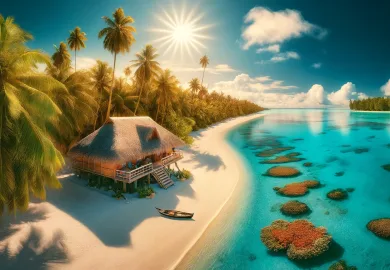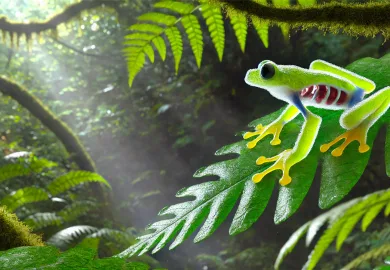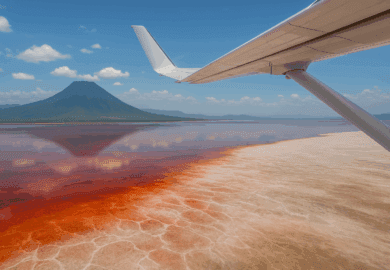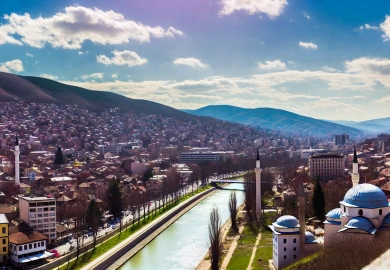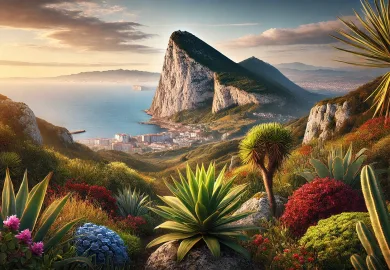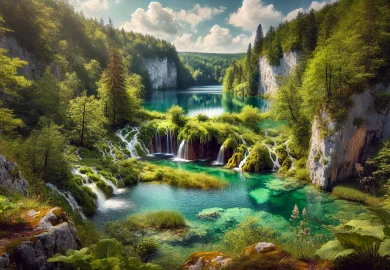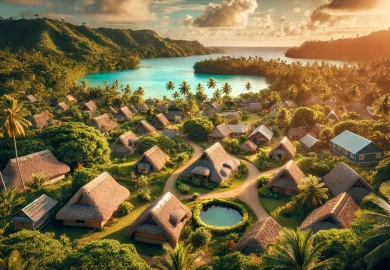
Vanuatu, one of the world’s smallest nations, is a true hidden gem that offers a blend of breathtaking landscapes, rich cultural heritage, and adventurous activities. Located in the South Pacific, this island nation comprises 83 small islands, each with its unique allure. If you’re looking for an off-the-beaten-path destination, Vanuatu is a place you must explore. Let’s dive deeper into the wonders of this paradise!
Exploring Vanuatu’s Natural Landscapes
Vanuatu’s natural beauty is beyond comparison. The islands are adorned with lush rainforests, stunning beaches, and active volcanoes that provide an experience like no other. When traveling to Vanuatu, make sure you immerse yourself in the diverse landscapes that this country has to offer.
Vanuatu’s tropical forests are filled with an incredible variety of plant and animal species. These forests are not only visually striking but are also a significant part of the local ecosystem. From the famous giant banyan trees to unique bird species, there’s so much to see for nature enthusiasts.
In addition to its rainforests, Vanuatu’s beaches are nothing short of spectacular. The white sandy shores meet the turquoise waters of the Pacific, creating a picture-perfect scene that seems straight out of a postcard. Whether you’re into sunbathing, swimming, or just soaking in the views, the beaches of Vanuatu are a must-visit.
Dive into Vanuatu’s Rich Marine Life
One of the main attractions in Vanuatu is its extraordinary underwater world. The country is known as a scuba diving haven, with its vibrant coral reefs and shipwrecks lying beneath the surface of the ocean.
Diving in Vanuatu is an unforgettable experience, with visibility often extending up to 50 meters. You’ll get to explore some of the world’s best-preserved reefs, where you can witness the vibrant marine life in its natural habitat. Snorkelers and divers will be thrilled by the colorful fish, sea turtles, and other marine creatures that make their home in these waters.
One of the most famous diving spots in Vanuatu is the SS President Coolidge, a World War II shipwreck that has become a renowned diving site. This massive wreck offers a fascinating glimpse into history, with its artillery and artifacts still intact under the sea. Divers from around the world come to Vanuatu just to explore this site.
Experiencing Vanuatu’s Unique Culture
The culture of Vanuatu is deeply rooted in Melanesian traditions, and the people of Vanuatu take great pride in their heritage. When you visit, you’ll find that the island’s communities are eager to share their customs, dances, and stories with visitors.
One of the most captivating cultural experiences in Vanuatu is the traditional custom dance, known as “kastom” dance. These performances are a vital part of the local festivals and ceremonies, featuring colorful costumes, body paint, and rhythmic music that tells stories passed down through generations.
Additionally, the local handicrafts are a significant aspect of Vanuatu’s culture. From intricate wood carvings to beautifully woven mats, these handicrafts are made with great skill and reflect the artistic talents of the Vanuatu people. Taking home one of these unique items is a great way to remember your journey to this enchanting island.
Adventure Activities in Vanuatu
For the adventurous traveler, Vanuatu offers a plethora of exciting activities. From volcano trekking to zip-lining through lush canopies, this island nation is packed with thrilling experiences for those looking to get their adrenaline pumping.
The most famous adventure on the island is trekking to the top of Mount Yasur, one of the world’s most accessible active volcanoes. Watching the volcano’s fiery eruptions from a close distance is an awe-inspiring experience that will leave you breathless. It’s a once-in-a-lifetime opportunity that you shouldn’t miss when in Vanuatu.
Besides volcano trekking, Vanuatu also offers other outdoor activities like kayaking, snorkeling, and even deep-sea fishing. The calm lagoons and pristine waters make it an ideal location for these adventures, catering to both beginners and seasoned adventurers alike.
Conclusion
Vanuatu may be small, but it is undoubtedly rich in beauty, culture, and experiences that are hard to find elsewhere. Whether you’re a nature lover, a culture enthusiast, or an adventure seeker, this island nation has something for everyone. The next time you’re planning a trip, consider exploring Vanuatu—one of the smallest countries in the world, yet full of wonders and surprises.

